Related Research Articles

Wilkes County is a county located in the east central portion of the U.S. state of Georgia. As of the 2020 census, the population was 9,565. The county seat is the city of Washington.

Columbia County is a county located in the east central portion of the US state of Georgia. As of the 2020 census, the population was 156,010. The legal county seat is Appling, but the de facto seat of county government is Evans.
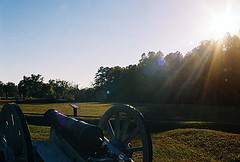
Ninety Six is a town in Greenwood County, South Carolina, United States. The population was 1,998 at the 2010 census.
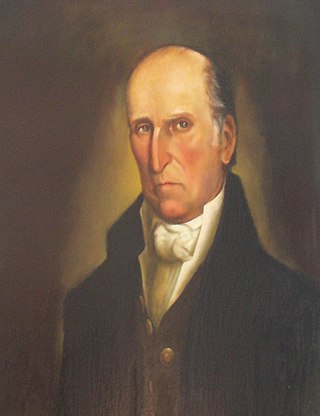
Andrew Pickens was a militia leader in the American Revolution. A planter and slaveowner, he developed his Hopewell plantation on the east side of the Keowee River across from the Cherokee town of Isunigu (Seneca) in western South Carolina. He was elected as a member of the United States House of Representatives from western South Carolina. Several treaties with the Cherokee were negotiated and signed at his plantation of Hopewell.
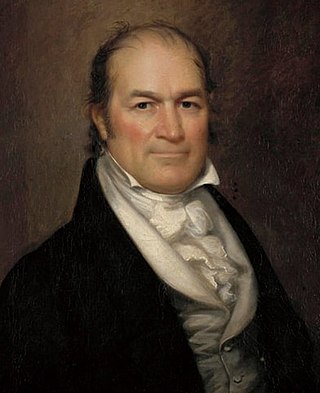
William Harris Crawford was an American politician and judge during the early 19th century. He served as US Secretary of War and US Secretary of the Treasury before he ran for US president in the 1824 election.
CSS Savannah, later called Old Savannah and Oconee, was a gunboat in the Confederate States Navy during the American Civil War.
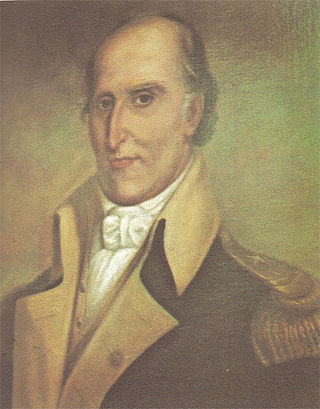
The Battle of Kettle Creek was the first major victory for Patriots in the back country of Georgia during the American Revolutionary War that took place on February 14, 1779. It was fought in Wilkes County about eleven miles (18 km) from present-day Washington, Georgia. A militia force of Patriots decisively defeated and scattered a Loyalist militia force that was on its way to British-controlled Augusta.

The siege of Fort Pulaski concluded with the Battle of Fort Pulaski fought April 10–11, 1862, during the American Civil War. Union forces on Tybee Island and naval operations conducted a 112-day siege, then captured the Confederate-held Fort Pulaski after a 30-hour bombardment. The siege and battle are important for innovative use of rifled guns which made existing coastal defenses obsolete. The Union initiated large-scale amphibious operations under fire.
The Blue Ridge and Atlantic Railroad of the United States purchased the Cornelia-Tallulah Falls section of the North Eastern Rail Road in an attempt to connect Savannah, Georgia to Knoxville, Tennessee. Chartered in 1887, it went bankrupt in about 1892 and in 1898 its properties became part of the newly formed Tallulah Falls Railway.

The southern theater of the American Revolutionary War was the central theater of military operations in the second half of the American Revolutionary War, 1778–1781. It encompassed engagements primarily in Virginia, Georgia, North Carolina, and South Carolina. Tactics consisted of both strategic battles and guerrilla warfare.

Colonel John Dooly (1740–1780), born in Wilkes County, Georgia, was an American Revolutionary war hero. He commanded a regiment at the Battle of Kettle Creek in 1779 and was killed at his home by Tories in 1780.

Keowee was a Cherokee town in the far northwest corner of present-day South Carolina. It was the principal town of what were called the seven Lower Towns, located along the Keowee River. Keowee was situated on the Lower Cherokee Traders' Path, part of the Upper Road through the Piedmont. In 1752 the Cherokee established New Keowee Town nearby, off the traders' path but in a more defensible location.
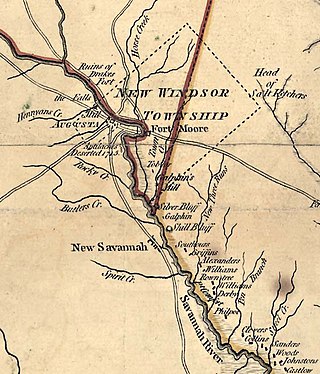
Savannah Town, South Carolina is a defunct settlement that was located in the colonial years on the Savannah River below the Fall Line in present-day Aiken County. In the 1670s the Westo had a village here, but they were displaced by the Savannah in a trade war, and it became known by 1685 as Savannah Town. The English colony had traders who did a lucrative business in dressed skins with the Savannah Shawnee. Fortified as a frontier post, the settlement developed and ferry service was established across the river. The town was gradually overtaken by its competitor of Augusta, Georgia, established in 1735 five miles upriver and closer to Indian settlements. Traders here intercepted commerce, sending it to their port of Savannah on the coast. By 1740 Savannah Town was declining, and by 1765 the village was abandoned and the fort closed.
The Cherokee have participated in over forty treaties in the past three hundred years.
The Cherokee people of the southeastern United States, and later Oklahoma and surrounding areas, have a long military history. Since European contact, Cherokee military activity has been documented in European records. Cherokee tribes and bands had a number of conflicts during the 18th century with Europeans, primarily British colonists from the Southern Colonies. The Eastern Band and Cherokees from the Indian Territory fought in the American Civil War, with bands allying with the Union or the Confederacy. Because many Cherokees allied with the Confederacy, the United States government required a new treaty with the nation after the war. Cherokees have also served in the United States military during the 20th and 21st centuries.
Brigadier-General Andrew Williamson was a Scottish-born trader, planter, and military officer. Serving in the South Carolina Militia, rising to be commissioned as brigadier general in the Continental Army in the American War of Independence. He led numerous campaigns against Loyalists and Cherokee, who in 1776 had launched an attack against frontier settlements across a front from Tennessee to central South Carolina. Williamson was particularly effective in suppressing the Cherokee, killing an unknown number of Cherokees and destroying 31 of their towns. As a result of his Indian campaign, the Cherokee ceded more than a million acres in the Carolinas.
The Province of Georgia was a significant battleground in the American Revolution. Its population was at first divided about exactly how to respond to revolutionary activities and heightened tensions in other provinces. When violence broke out in 1775, radical Patriots took control of the provincial government, and drove many Loyalists out of the province. Georgia also served as the staging ground for several important raids into British-controlled Florida.
William "Bloody Bill" Cunningham (1756–1787) was an American loyalist infamous for perpetrating a series of bloody massacres in South Carolina's backcountry in the fall of 1781 as commander of a Tory militia regiment in the Revolutionary War. Though his family were loyal to the British crown, Cunningham initially enlisted in the Continental Army as part of the State of South Carolina's 3rd regiment in 1775. His tenure in the rebel army was an unhappy one and Cunningham changed sides to fight for the British in 1778. He earned the nickname "Bloody Bill" for the violent, ruthless nature of his raids on rebels and patriot civilians.

The Snow Campaign was one of the first major military operations of the American Revolutionary War in the southern colonies. An army of up to 3,000 Patriot militia under Colonel Richard Richardson marched against Loyalist recruiting centers in South Carolina, flushing them out and frustrating attempts by the Loyalists to organize. The Patriot expedition became known as the Snow Campaign due to heavy snowfall in the later stages of the campaign.
The Battle of Lindley's Fort was part of a campaign by Loyalist and Cherokee forces to gain control over the South Carolina backcountry from Patriot forces early in the American Revolutionary War. The Cherokees were involved because ongoing encroachment of their territory in the area had led them to take up arms. These activities prompted settlers to seek refuge at Lindley's Fort in present-day Laurens County. A joint force of Cherokee and Loyalists adorned with Indian warpaint descended on the fort one day after about 150 militiamen arrived at the stockade fort. The defenders repulsed the attackers, and when they withdrew, made a sortie and pursued them. Two Loyalists were killed and 13 taken prisoner.